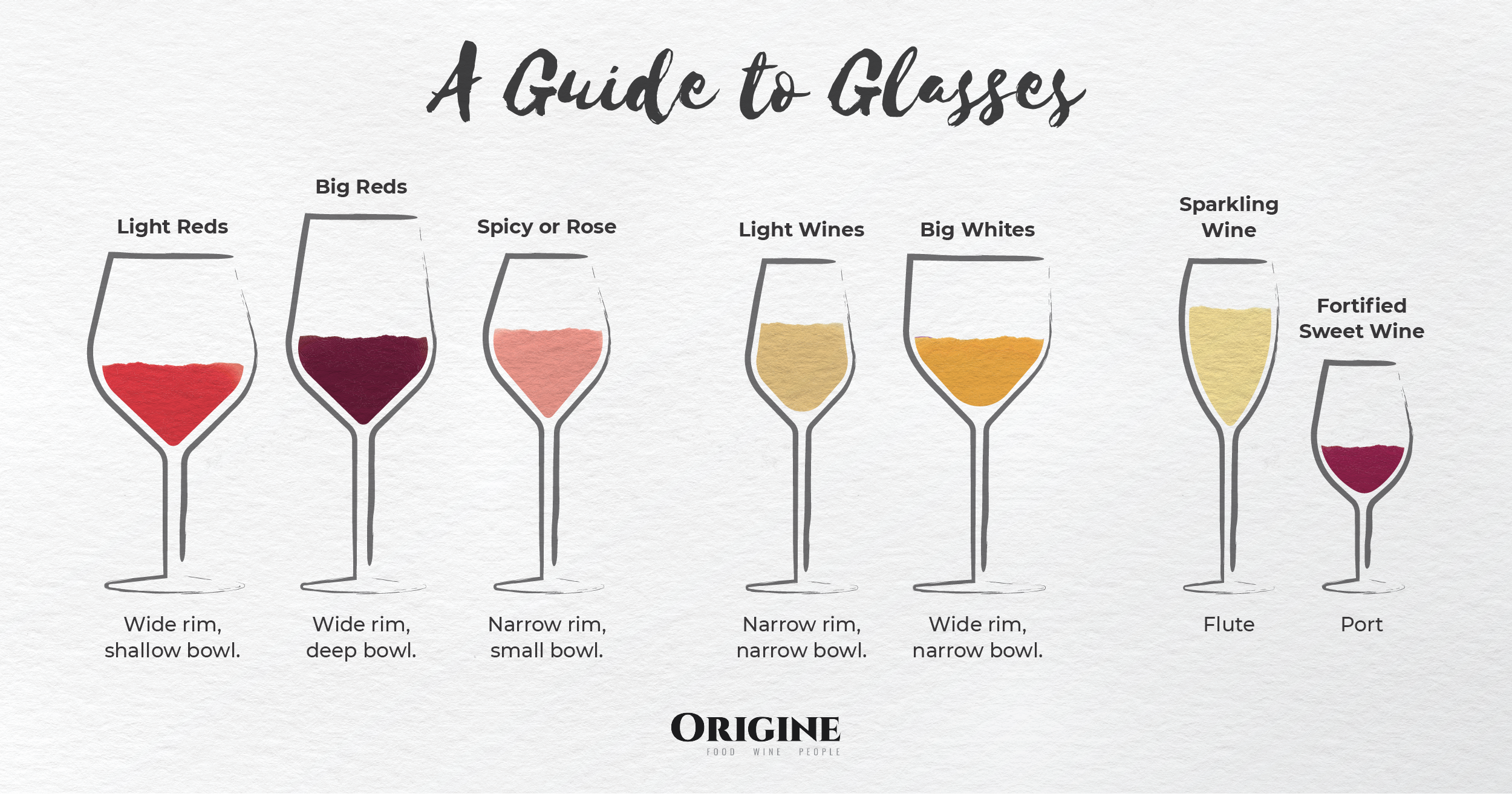Wine glasses aren’t just for show. The shape of the glass you use actually affects how wine aerates or swirls, how aroma is captured, and how the wine is delivered into waiting mouth and expectant palate. Thinking of having a spot of sherry, a full red, or a light white wine? Here’s how to choose the right glassware based on the wine you’re serving:
Red wine glasses typically mellow out the tannins and spice of red wines, making the wine taste smoother and more pleasant to drink. Wide openings and shallower bowls are suited for light and floral red wines. Deeper bowls are better for full, tannic reds so the ethanol can evaporate (reducing that sharp alcohol odor), and aromatic notes better conveyed. Rosés, spicy, and medium-bodied red wines benefit from small bowls and narrow rims — the entire flavor profile unfurls gradually on the tongue and does not overwhelm the palate.
White wines are usually served in smaller glasses. This glassware maintains temperature and helps retain delicate florality and various other notes (as the liquid is nearer the nose). Narrow-rimmed glasses are appropriate for lighter, subtler-scented whites while wider rims are for full-bodied, fragrant white wines.
Specialty glassware, such as champagne flutes and port glasses, are made for sparkling wines and fortified sweet wines, respectively. Tall bowls and narrow rims preserve the carbonation of champagne and channel more aroma. The small size and narrow rims of port glasses reduce evaporation and protect that potent flavor.
A particular type of wine is best appreciated in a particular type of glass. While the even most exquisite glassware won’t turn a middling wine into a good drink, the correct wine glass can definitely upgrade the experience by enhancing notes and overall flavor. The right glass allows best expression and makes a good vintage even better — you’re tasting the wine and savoring it at its full potential, as the winemakers intended.


